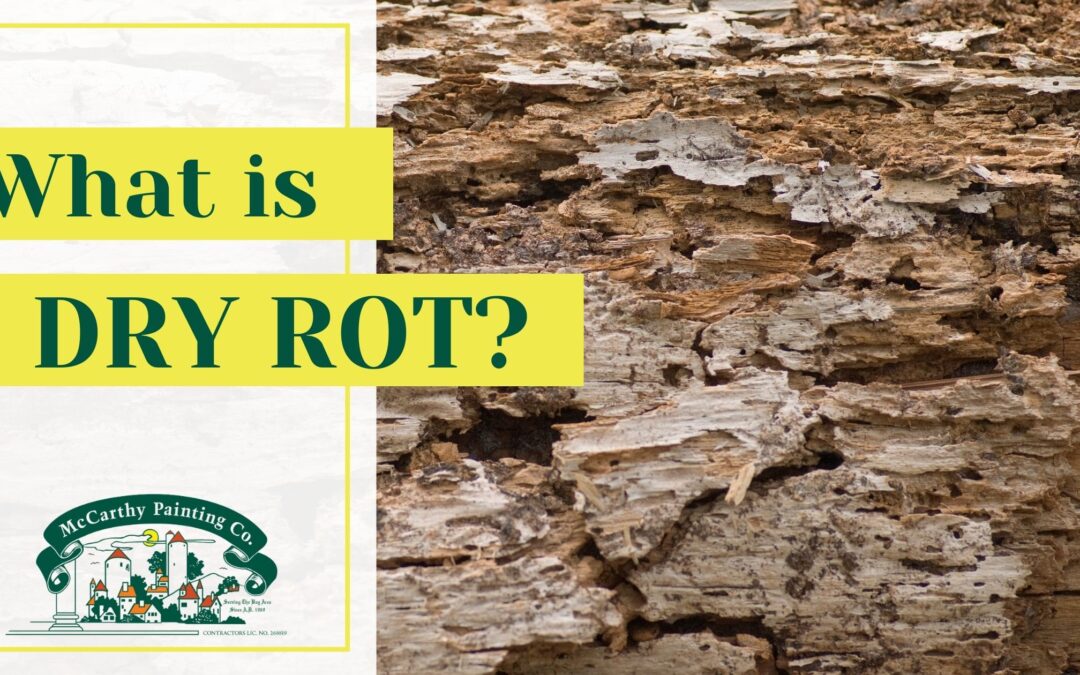WHAT IS DRY ROT?
Establishing a beautiful home or a thriving business is no easy task and the process by which one acquires a house or a building is tedious, time-consuming and difficult. However, having a place to call your own where you can build a life or a dream makes it all worth it. But what could ruin such an aspiration? Two words: dry rot.
This ominous-sounding timber condition is widely considered as one of the worst types of fungal decay. It is so termed because the afflicted wood’s color turns brown and appears dry.
Dry rot is caused by the fungus Serpula lacrymans which tends to grow in damp and poorly ventilated conditions, such as when there are leaky pipes or drainage issues somewhere in the building. This reason is why “dry rot” is a misnomer, as the fungus actually requires a moisture content of at least 20% for it to grow. Once it does make its entrance however, it can be very tricky to get rid of.
The fungus destroys the cellulose within the wood, making the timber shrink and appear dry. This condition then predisposes it to cube-shaped cracks or bits—termed cuboidal fractures.
Dry rot, if left untreated, can inflict serious damage to the wood, thus knowing how to spot and then get rid of it is incredibly important for any home or business owner.
How to Identify Dry Rot
To know how to identify this dreaded culprit or what areas of your place are at risk, it is best to remember the conditions that the fungus needs to thrive: dampness and poor ventilation. These places may either be those unseen and uncovered only when there’s renovation, or they may be hiding in plain sight—so much so, that we tend to overlook them. Thus, areas with improper waterproofing can lead to problematic results.
Pay close attention to the following areas as all it will take for dry rot to show up is a small gap in the wood that either wasn’t sealed properly from the elements, or is exposed constantly to dampness:
- Exterior Doors
- Windows
- Decks around the house
- Stairs
- Basement
- Attic
- Crawl spaces
- Floors underneath sinks or around bathtubs and showers
- Damaged roofs
But what exactly are the signs of dry rot? How will you know what to look for?
Dry rot fungus, like any other fungi, has a multi-step life cycle and each step has distinct features which can help you identify whether or not the wood has dry rot. These are the following:
-
- Spores
Although spores are generally found all over our environment to some degree, not all of them germinate into the fungus. However, once you start noticing patches of these on the wood on your property, then it is a clue that you might have an outbreak coming soon. These spores look just like orange or brown dust so keep a keen eye out.
-
- Hyphae
Hyphae are the second stage of dry rot. They branch out as long, thin, white strands both on the inside of the timber as well as outside. They look like white strings and can even look like spiderwebs.
-
- Mycelium
For fungi, mycelia are specialized structures used to transport nutrients and can propagate when it needs to expand its domain onto other timber. For dry rot, these vary in colors from gray to white.
-
- Fruiting Bodies
These bodies, otherwise known as sporophores, are the final stage of this fungus. They emit spores, spreading the rot to other parts of the building. These look more like mushrooms.
Besides the above mentioned qualities of the fungus itself however, you can also find many other clues that could point to the existence of dry rot in the infrastructure:
-
- Warped Timber
As was mentioned earlier, the fungus degrades the cellulose in wood and along with this, the water content of the wood is diminished. This causes warping or even shrinking of the timber.
-
- Cuboidal Fractures
Remember the characteristic cube-shaped pieces that result from the fungus acting on the wood. This could be a definitive clue that you have dry rot in the vicinity.
-
- The Smell
Dry rot has a distinctly damp or musty smell to it so it’s a good idea to not just keep your eyes open, but your nose as well.
Dry Rot Repair
Timber affected by dry rot is often no longer stable or easily treated. At the very least, the wood becomes discolored; at most, the wood could crumble under very little stress.
The initial step with repairing the damage is to first identify that the structure has dry rot in the first place. After this, elimination of the two main conditions the fungus needs is vital (dampness and poor ventilation). But if the areas affected are still poorly ventilated, e.g., crawl spaces or areas under sinks, even just eliminating the source of the moisture can already prevent the spread of the fungus. It may even be advised that you use a dehumidifier as well, to ensure moisture removal.
Leaky pipes, problematic roof tiles, windows and outside doors lacking proper caulking, penetration damp—whatever the cause of the dampness, once this issue is remedied, then you wouldn’t need to worry about the dry rot returning.
In minor cases wherein the wood has not warped and seems salvageable, the wood can be hardened and filled with epoxy. With more extensive damage however, the infected timber must be removed to prevent the spread of the rot. These timber will then be replaced with pre-treated ones to prevent a re-infestation.
How To Prevent Dry Rot
As with any problem, the best cure is definitely prevention. And with issues with dry rot, the most cost-effective way to combat it is to prevent its occurrence in the first place. Home and building maintenance—from keenly observing your surroundings, all the way to snappy problem-solving—is necessary to prevent dry rot.
Primary to prevent it is to keep your timber dry. Ensure that the roof is doing its job properly, keep your drainage pipes from leaking, sufficiently caulk the windows and exterior doors, assess any areas of your home that tend to collect water and solve the issue—all of these will help prevent dry rot from damaging your home or business.
Another important preventive measure you can undertake is to properly paint these areas, as good paint can help seal the cracks that the moisture can get into. Longer-lasting high quality paint, along with the proper primer may just be your best bet to prevent dry rot from getting into your home.
How McCarthy Painting Can Help
Marin homes, because of exposure to fog and rain, can be subject to Dry Rot. Luckily for you however, we at McCarthy Painting Co. have over 50 years of experience and expertise at both identifying dry rot and making minor repairs. Don’t let your home or business fall into the trap of dry rot. Let us help you, so you can rest assured that your dream home and business will continue to flourish in a beautifully maintained space, all with the help of McCarthy Painting, Co.


